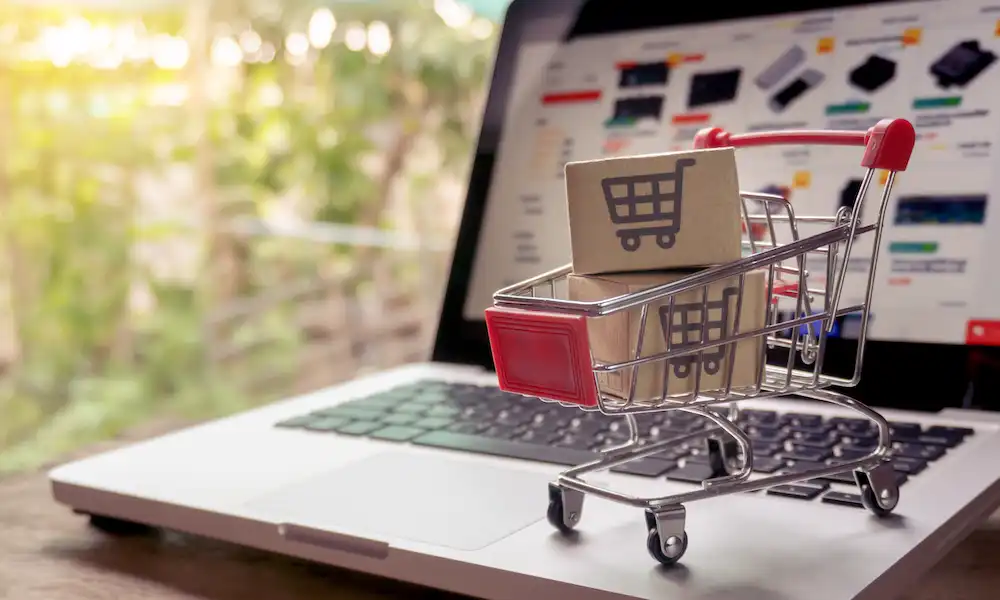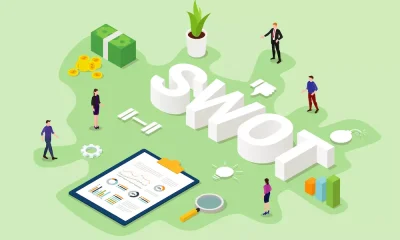Management
Beginners Guide: Starting A FBA Amazon Business

Jeff Bezos founded Amazon in 1994 and today it is the largest online retailer. If you’ve not heard of it, you’re in the minority as Amazon is the household name for buying an selling products and services online.
Statista reports in April 2023, Amazon had 4.8 billion visits making it a leader that’s far out infront of its nearest rival. eBay is the next most popular ecommerce site with 1.2 billion visits during the same month.
Fulfillment by Amazon
Fulfillment by Amazon (FBA) is a service offered by Amazon that allows sellers to store their products in Amazon’s fulfillment centers. Another name for this service is dropshipping.
When a customer places an order, Amazon picks, packs, and ships the product on behalf of the seller. Additionally, Amazon handles customer service, returns, and other aspects of order fulfillment.
How FBA Works
The ‘Fulfillment by Amazon’ business model is an easy, low-risk, high-profit way for sellers to ship billions of items worldwide but how does it work? Here are the steps taken by the seller, customer and Amazon.
1. Send Inventory to Amazon
Sellers send their products to Amazon’s fulfillment centers, where they are stored until sold.
2. Customer Places an Order
When a customer places an order on Amazon, the FBA system automatically selects the product from the inventory and processes the order.
3. Picking and Packing
Amazon employees pick the product from the warehouse, pack it, and ship it to the customer.
4. Customer Service and Returns
Amazon provides customer service for the order, including handling returns and refunds.
Why Sellers Use FBA
Starting a business is full of risks and costs. People keen to set up a side hustle or become self-employed love the drop-shipping model. There are many advantages to using a drop shipping service like FBA, including the following:
- Prime Eligibility: Products fulfilled by Amazon are often eligible for Amazon Prime, which can attract more customers due to the fast shipping options.
- Scalability: FBA allows sellers to scale their business without worrying about the logistics of order fulfillment.
- Customer Trust: Many customers trust and prefer buying products fulfilled by Amazon because of the reliable and efficient shipping process.
- Global Reach: FBA can also help sellers reach international customers by leveraging Amazon’s global fulfillment network.
Amazon’s exponential growth means reaching a huge customer base that’s difficult to build otherwise. When people search for products online, most of them go to Amazon first.
Starting Your FBA
Ready to start an Amazon FBA business? Read on to learn how to plan, launch, and grow a successful Amazon store from scratch.
1. Make a Plan
Before brainstorming products and looking for suppliers, you need an initial Amazon FBA business plan. Search online for a free FBA business plan template and instructions on completing it.
Like any other business plan, list all the steps to operationalize your business. You will need to know your target audience, competition, marketing channels, and product specifics.
Then, create your business goals and timeframes for accomplishing them. The plan will help you see the bigger picture and teach you to make progress, not focus on perfection. You won’t be able to complete your business plan immediately until you have researched the market and chosen your first product.
2. Do Market Research
You need to do thorough market research before you pick a product that will generate sales. When you’re starting out, a simple Google search for your product or niche will give you an idea of how much competition you have.
Next, search through Amazon’s Best Seller Rankings to see what items are currently in demand. Some tools can help you dig deeper into niches and bestselling products to understand current market trends.
Another part of your market research is knowing your competition. Read and make notes on seller profiles, product descriptions, and reviews. This is a great way to learn about your customers and their problems, too, and how you can solve them better than your competitors.
4. Pick a Product
Now that you’ve brainstormed a few product ideas and researched, it’s time to pick the winning product. Choosing the product to kick-start your sales is the most crucial step.
Choose a low-demand product; no amount of marketing or advertising would convince people to buy it.
On the other hand, if you go with a product similar to what big brands are selling, you’re probably fighting a losing battle, too. It’s best to start somewhere in the middle and see where it leads you.
Don’t be discouraged if your initial product choice doesn’t work out. You will find a way to use what you’ve learned.
5. Find a Supplier
Once you pick a winning product, it’s time to find a reliable supplier. One of the most popular sources is Alibaba in China, but you can use local or national suppliers based on your product niche and market demand.
When choosing a supplier, consider the shipping time, rates, product quality, and initial product cost. These factors will influence your selling price and profit margins, so make sure to look around before deciding.
2. Create an Amazon Seller Account
Starting an Amazon FBA business begins with creating an Amazon Seller Account. You can choose to create a business or individual account based on the number of items you expect to sell per month.
If you have a registered company, it’s best to start with a business account. Amazon gives sellers tons of tools and instructions to help them build and grow a profitable business.
6. Market Your Products
Marketing your products the right way will be the driving force behind your first and consecutive sales. Though hundreds of marketing tactics you can use to raise brand awareness, choose only a few at the beginning.
The same goes with marketing channels – most sellers go with social media ads, search engine ads, influencer marketing, and then expand if needed. One of the best ways to get the word out is to create an audience around your niche and then market to them.
You can also use Amazon’s Early Reviewer Program to gather your first reviews. The program aims to help improve both sellers and shoppers’ experience by offering small rewards or discounts to qualified reviewers. This is a great way to see what your customers think of the product, and you can use the reviews as social proof.
7. Ship Your Products
There are two ways to ship your products from the supplier: you can send them to yourself, store them at a warehouse (or your garage), or send them directly to Amazon’s warehouses. There are pros and cons to each method, but in the end, it all depends on the nature of your products.
If you ship from an international seller, you’ll be subject to taxes, customs fees, international shipping laws. If you ship from a national or local seller directly to Amazon’s warehouse, you won’t see the products in person and inspect them for quality.
If you’d like to prepare and double-check your products before selling, ship them to yourself first. Then send them to Amazon, and they’ll ship them to your customers.
Make sure you’re up to speed on everything there is to know on what to do if there is a clearance delay which can happen when your product goes through the customs process.
8. Create Product Listings
Once you’ve set up a seller account and have chosen your products, the final step is creating product listings. This is the most important part of your FBA business because these listings’ quality can make or break your sales.
You’ll need professional product photos (and videos), along with detailed product titles, and descriptions to tell customers how to use your products. The product listing should capture the customers’ attention right away and provide essential information about the product features and benefits.
Start an Amazon FBA Business Today with These Tips!
Building and growing a successful Amazon FBA business is one of the best ways to make passive income and build a brand. These tips will help you learn the basics of FBA so you can set up a store and start selling in no time!
Want more articles like this? Head over to our blog, where we share the best tips on starting and growing a successful business.






